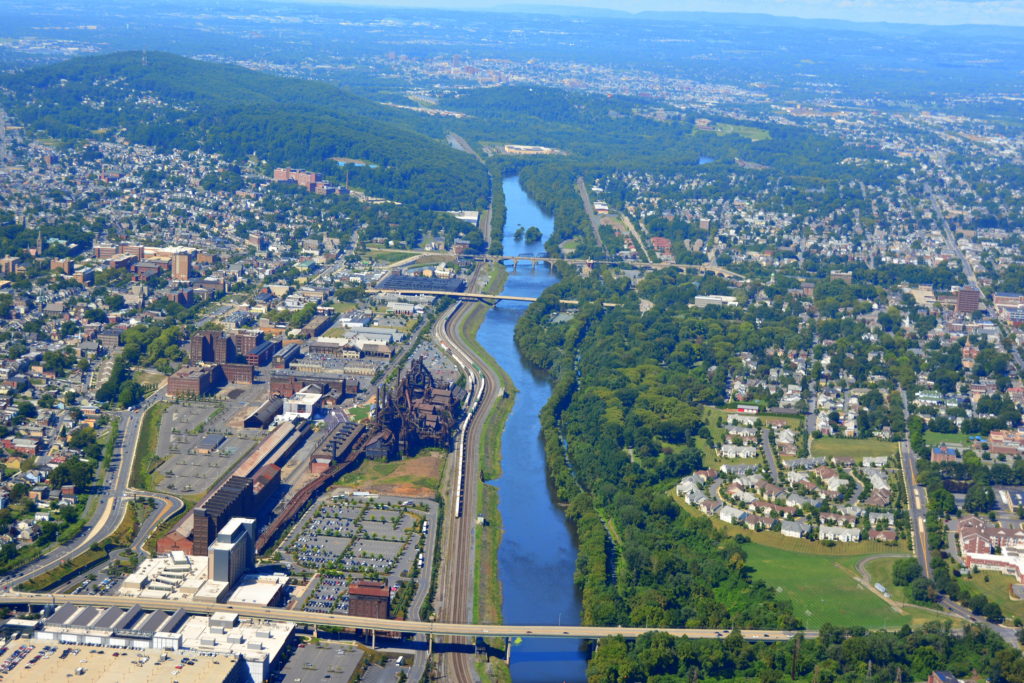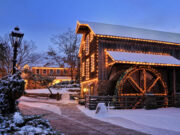Counties throughout Pennsylvania are in crisis as COVID-19 continues to ravage economies across the country.
“We cannot return to the world that existed before,” announces a new tax proposal for a Regional Prosperity District (RPD) in Lehigh County. “There is no time for piecemeal reforms or minor alterations in policy or practices.”
“Right now, we’re just wholly unprepared for the world that’s coming,” explains Allentown City Council member Joshua Siegel, who cosigned the tax-sharing initiative with Lehigh County Controller Mark Pinsley.
The Lehigh RPD proposal is notable for not only tackling municipal finances to buoy crucial infrastructure, services, and economic development, but also highlighting the region’s creative economy. For Pinsley and Siegel (who is also the assistant operations manager in the local controller’s office), that spans arts-and-culture institutions and tourism as well as the intellectual property realm, entrepreneurship, and technology. In contrast to the City of Philadelphia, which proposed eliminating its arts and culture office in response to the pandemic’s budget squeeze, these Lehigh leaders see a broadly defined cultural sector as an essential investment.

There’s no telling how much state and federal funding the county can expect, the proposal notes, and it’s time to think locally.
Lehigh isn’t Allegheny or Philadelphia counties, but “we’re punching above our weight in terms of our cultural amenities,” says Siegel. “We have really managed to, as a cultural community, be very innovative in drawing people to our area.”
Think the ArtsQuest complex, including the historic SteelStacks, home to the annual Bethlehem Musikfest (America’s largest free music festival), or Allentown’s Blues, Brews, and Barbecue festival. Then there’s the Lehigh Valley Zoo, the Allentown Art Museum, the DaVinci Science Center, and lots more.
“You think paintings on the wall are just paintings on the wall?” asks Pinsley. “No. That drives employment, and not just for the people who work in the museum.”
Those institutions create jobs in sectors from childcare to retail to restaurants who cater to arts-goers.
We have really managed to, as a cultural community, be very innovative in drawing people to our area.Joshua Siegel, Allentown City Council
Tourism and the arts, despite being chronically undervalued when it comes to budgets, offer an extremely high return on investment — not to mention the quality-of-life factors that attract and retain the region’s businesses and workers.
According to the RPD proposal, the Lehigh Valley currently boasts 19,000 “creative jobs,” with an aggregate value of more than $538 million in wages, or about 2.4 percent of the Lehigh Valley’s annual $22 billion in earnings. The arts and culture sector drives both local spending and the major financial infusion of tourism, which brings the county $2 billion per year (and $395 million in annual tax revenue).
The RPD recommends two new revenue sources: a county-wide sales tax at 1 percent, and a .5 percent jump in earned income tax (EIT).
In Pennsylvania, Siegel points out, the property tax is “one of the most reviled taxes that there is,” and many municipalities simply do not have the geographic area to support their governments this way. Residents want diversified tax streams.

“We were trying to figure out a balance between the sales tax and the EIT,” says Pinsley, noting that EIT is a good target because it affects only those who are earning (not people who are unemployed or on a fixed income). Sales tax, particularly in Pennsylvania, is a discretionary consumption tax with essentials like food and clothing exempt. And with the number of visitors to the county, a significant percentage of sales tax revenue is not tied to residents.
Based on numbers from 2017, the suggested EIT and sales tax streams could provide the county with an additional $105 million per year, and here’s where the tax-sharing comes in.
Ordinarily, each municipality in the county collects its own taxes (and would continue to do so under this plan), but as Pinsley puts it, the extra revenue from the new streams would “go into a pot” that is shared across the entire county.
This fund would be divided three ways. About half would be destined for a “municipal stabilization fund” used by local governments in fiscal distress. A quarter would go to stabilize critical county-wide services such as corrections, the public defender’s office, and volunteer fire departments. And $25.25 million would become a new Regional Investment Fund, supporting amenities like parks, libraries, performing arts venues, and museums.
The projected revenue relies on “normal economic circumstances,” which of course is not today’s landscape. No one knows how long the pandemic will last or what its full toll will be. But even if the RPD plan’s projected revenue were scaled down by half, Pinsley says, “that’s not chump change.”
Pinsley knows many people might think, “Why would you even recommend taxes during this timeframe?” He and Siegel explain that given the current crisis, it’s not a question of whether residents will pay, but how. “If you don’t think new taxes are coming, you probably have your head in the sand.”

And this proposal is not unusual. “There already is a lot of precedent in Pennsylvania for what we’re suggesting,” adds Siegel.
He points to a 1990s tax overhaul in Allegheny County, dubbed the Regional Asset District, that’s similar to the Lehigh proposal. Closing mills and steel plants threw the Pittsburgh region into an economic crisis, risking the loss or privatization of the area’s assets. But a new 1 percent county-wide sales tax sparked new investments (including libraries, parks, and the arts) to the tune of $3.9 billion as of 2019.
“We’re not doing anything unorthodox,” explains Siegel. “A lot of the hard work has been done for us. This has been successful in a number of communities across the country, so why not follow suit?”
“This proposal is intended to spark a conversation,” he adds. The numbers in the Lehigh RPD are subject to change, and the road to implementing the plan is a long one. Lehigh County commissioners and executives would need to press the general assembly for a resolution, which state legislators would then have to enact, before the county could implement the changes.
“It’s not an easy lift,” says Pinsley, but especially given how quickly the federal government moved on a relief package in the trillions, he’s “hopeful” that Pennsylvania lawmakers will be on the case.
“We need to make sure we have this tool in our toolbox,” says Siegel of facing the pandemic crisis with the RPD plan. “It focuses on the key sectors that are going to be integral to getting our economy back together, and getting our community back together.”
Check out the full Regional Prosperity District plan here.
ALAINA JOHNS is a Philadelphia-based freelance writer and the Editor-in-Chief of BroadStreetReview.com, Philly’s hub for arts, culture and commentary. You can visit her at her blog, where fiction need not apply.
Lead image: 2016 Musikfest in Bethlehem / Courtesty of ArtsQuest



